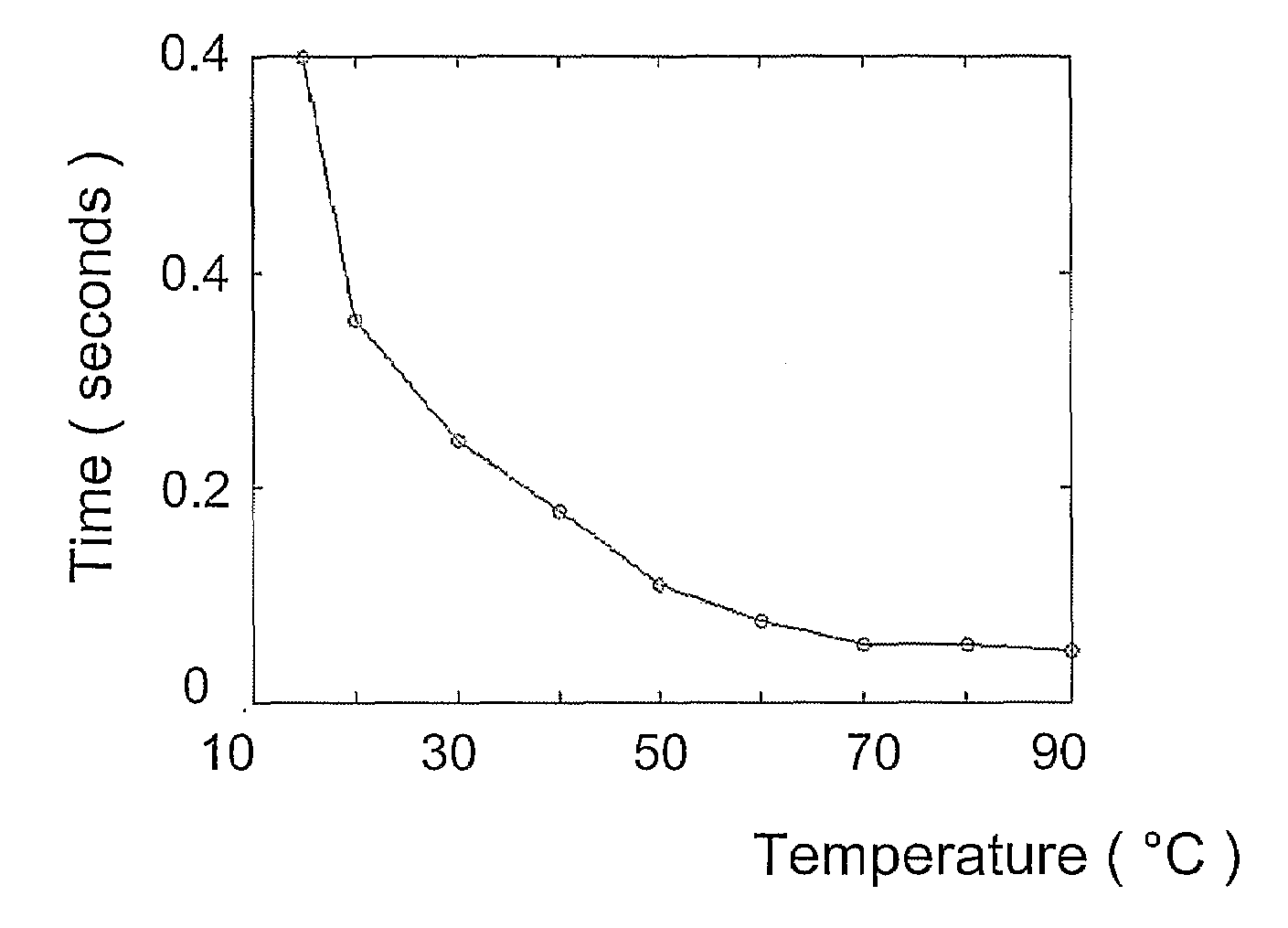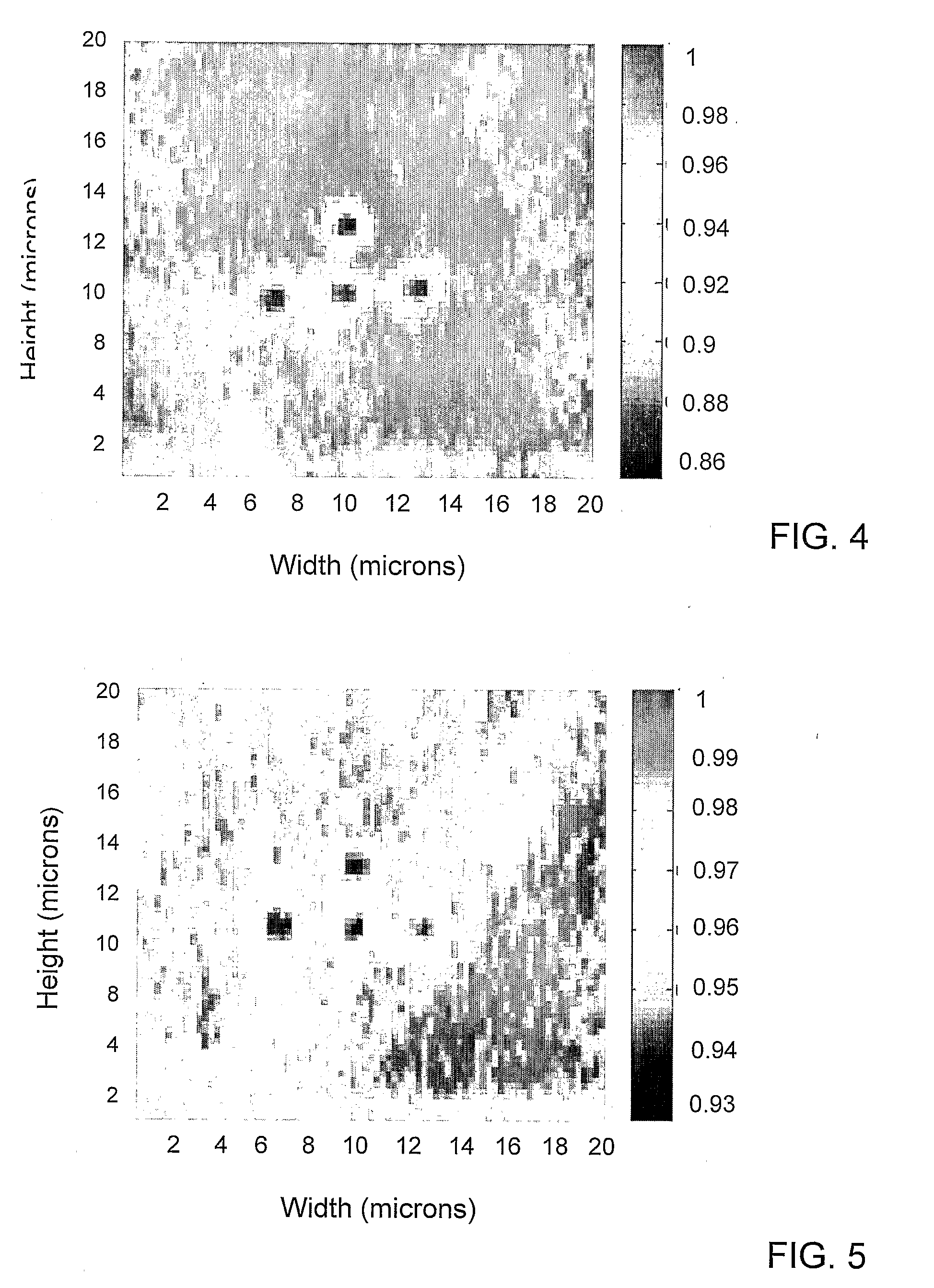Disks for data storage
a technology of optical memory and disk, applied in the field of 3d optical memory improvement, can solve the problems of difficult to obtain lifetime, difficult to obtain uniform disk, and inability to meet the needs of storage, so as to facilitate enhanced writing of data, enhance reactivity, and high concentration of chromophore
- Summary
- Abstract
- Description
- Claims
- Application Information
AI Technical Summary
Benefits of technology
Problems solved by technology
Method used
Image
Examples
example 1
[0080]Disks containing chromophores linked to a poly(acrylate) chain can be made by copolymerizing MMA with a chromophore-containing monomer, e.g. “eMMA” or “eAA” (structures below). A solution of the chromophore-containing monomer and ˜0.2% AIBN (a radical initiator) in MMA is prepared at 60-65 C, and is put into a mold in the shape of a disk. The mold is lowered into a water bath which is held at 60° C. for 18 hours, after which the mold is cooled and opened to obtain the disk.
[0081]As a consequence of the solubility limit of eMMA and eAA in MMA, it is not possible to make disks that contain more than ˜20 wt % eMMA or ˜25 wt % eAA. However, it is possible to create a disk that contains both eMMA at 10 wt % and eAA at 20 wt %. Thus, by using a mixture of only two chromophore-containing molecules that differ only in a methyl group, it is possible to increase the maximum total chromophore concentration from 25 to 30 wt %. As a consequence of the solubility limit of eMMA and eAA in MM...
example 2
[0082]A photochromic polymer comprising eMMA as the active chromophoric medium was mounted in a temperature-controlled read / write apparatus, and data spots were written at different temperatures. The irradiation time required to write spots as a function of temperature is plotted in FIG. 1. As shown in the figure, a temperature change from 15° C. to 90° C. increases the writing speed up to tenfold, perfectly demonstrating the heating concept.
example 3
[0083]A photochromic polymer comprising ePMMA as the active chromophoric medium was mounted in a temperature-controlled read / write apparatus, and data spots were written at different temperatures. A difference in modulation between spots written at 90° C. and spots written at 30° C., when both are read at 30° C. were found. Spots written at 90° C. showed about twice the modulation of spots written at 30° C. Additional experiments were conducted to quantify the possible improvement factor in different polymer matrices at different temperatures.
[0084]The sample was put on a copper holder that was heated using a power resistor. The holder was connected to a PI Nanocube in order to provide compensation for holder expansion during heating. A calibration cycle was done, in which the offsets resulting from expansion were measured. 4 spots were written at 90° C. Each spot was written for 20 seconds. The same pattern was written at 30° C. The reading of the written data (at 30° C. and at 90°...
PUM
| Property | Measurement | Unit |
|---|---|---|
| concentration | aaaaa | aaaaa |
| photochromic | aaaaa | aaaaa |
| absorbance | aaaaa | aaaaa |
Abstract
Description
Claims
Application Information
 Login to View More
Login to View More - R&D
- Intellectual Property
- Life Sciences
- Materials
- Tech Scout
- Unparalleled Data Quality
- Higher Quality Content
- 60% Fewer Hallucinations
Browse by: Latest US Patents, China's latest patents, Technical Efficacy Thesaurus, Application Domain, Technology Topic, Popular Technical Reports.
© 2025 PatSnap. All rights reserved.Legal|Privacy policy|Modern Slavery Act Transparency Statement|Sitemap|About US| Contact US: help@patsnap.com



